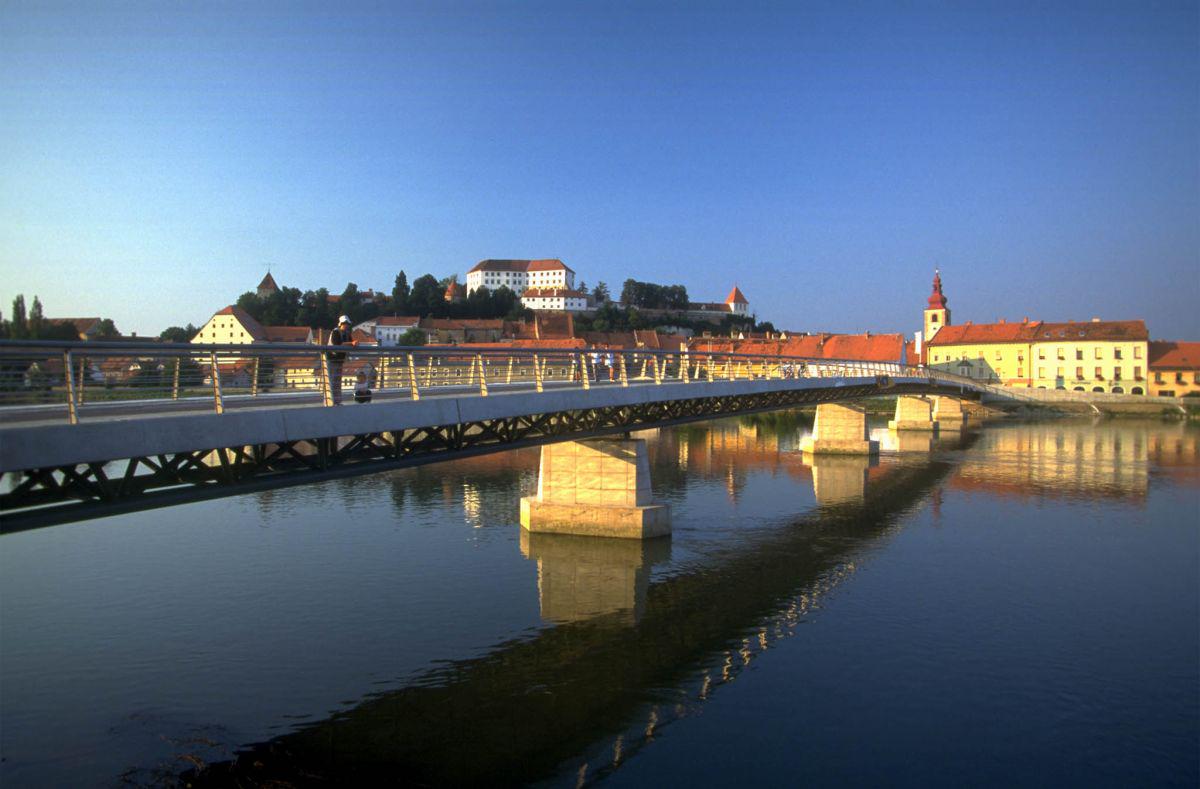
The medieval town of Ptuj is famous not just for being Slovenia’s oldest urban center, but also for the magnificent castle that overlooks it. For much of its history, the building was used to defend the town below from foreign invaders, but its architecture now makes it one of Slovenia’s most popular Medieval sites.
Fortifications have stood on Ptuj’s castle hill almost since the beginning of human settlement in the area. The oldest archeological remains date back to 1000 B.C., and records indicate that an important fortress stood on the site in the Classical Era, when Ptuj was a thriving Roman town known as Poetovium. Excavations on the castle hill have uncovered early Slavic graves and what could have been a temple devoted to the Roman god Jupiter.
In the 12th century, the Bishops of Salzburg had an impressive fortress built to replace the modest defensive buildings from the early Middle Ages. For a while, coins were even minted at the new castle. But defense was the bishops’ primary concern; early historical records mention the building’s impregnable walls and the imposing castle tower.
Over the years, ownership of the castle alternated between the Bishops of Salzburg and various noble families – for a time, the castle was even under Hungarian control --, but the building’s role did not change. A large garrison of soldiers was stationed on the castle. From there, the men could watch over the strategic Drava Valley and alert others of any Turkish incursions, which long threatened the Slovenian Lands.
By the 17th century, the Turks had ceased to be a threat. A period of stability enabled much of the castle to be rebuilt in the Baroque style, which was then taking Europe by storm. In the 19th century, a forward-looking noblewoman named Terezija Herberstein bought the castle, whose condition was deteriorating, and she thoroughly renovated the building, bringing it into the modern era.
The castle would remain in the Herberstein family until 1945, when the newly installed Communist authorities nationalized it. Today, Ptuj Castle is a museum. Visitors can admire its various archeological styles, from its Baroque splendor – many of the rooms are covered in elaborate plasterwork – to remains of older Gothic elements. Some of the rooms have proven to be ideal venues for musical events and other cultural programs that are bringing a new vitality to Ptuj. The building, crowned by watchtowers from various historical periods, is considered one of the finest castles in Slovenia -- and has become an unmissable stop for people visiting the country’s oldest town.


































































